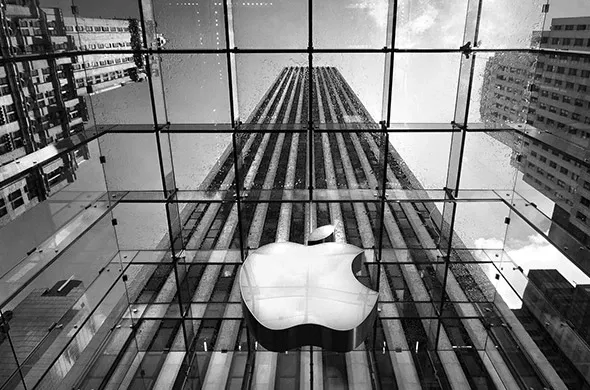EDPB Says ‘Consent or Pay’ Models Should Offer Real Choice
The European Data Protection Board pressed large online platforms to give users free options without targeted ads.

Apple, seeking a breakthrough product to succeed the iPhone, aims to have technology ready for an AR headset in 2019 and could ship a product as early as 2020, according to Bloomberg.
Unlike the current generation of virtual reality headsets that use a smartphone as the engine and screen, Apple’s device will have its own display and run on a new chip and operating system, according to people familiar with the situation. The development timeline is very aggressive and could still change.
While virtual reality immerses the user in a digital world, augmented reality overlays images and data on the real one. CEO Tim Cook considers AR less isolating than VR and as potentially revolutionary as the smartphone. He has talked up the technology on Good Morning America and gives it as almost much attention during earnings calls as sales growth.
Apple began putting together a team to work on AR-related projects a couple of years ago. Led by Mike Rockwell, who previously ran engineering at Dolby Labs, the group has now grown to several hundred engineers from across Apple. Scattered across office parks in both Cupertino and Sunnyvale, the team is working on several hardware and software projects under the umbrella code name of “T288.“
The team’s first product was ARKit, tools that outside software developers use to create AR applications for the latest iPhones and iPads, leveraging their screens, cameras and processors to create virtual 3-D interfaces for online shopping, education and gaming. This was an interim step, giving Apple an opportunity to test the technology on an existing product.
The next step, creating a headset with a built-in display capable of streaming 3D video without draining the battery, is much more complicated. Cook acknowledged as much in a recent interview with The Independent, when he said: “Anything you would see on the market any time soon would not be something any of us would be satisfied with.“
As with previous products, Apple isn’t waiting around for someone else to create a chip capable of powering its AR headset. It’s designing one in-house that’s similar in concept to the “system-on-a-package“ component in the Apple Watch. The new operating system, internally dubbed “rOS“ for “reality operating system,“ is based on iOS.
Apple hasn’t finalized how users will control the headset and launch apps, but is investigating touch panels, voice-activation via Siri and head gestures. Engineers are prototyping a range of applications, from mapping and texting to more advanced features including virtual meeting rooms and 360-degree video playback. The company has discussed pairing the headset with its own version of the App Store, where users would be able to download content.
Because Apple doesn’t have a fully operational headset of its own, engineers have begun using HTC Vive headsets for testing purposes. They’re also working on a device similar to an Oculus Gear VR headset that uses an iPhone’s screen, cameras and chipsets. Apple doesn’t plan to sell the gadget but instead aims to use it internally to test AR apps next year.